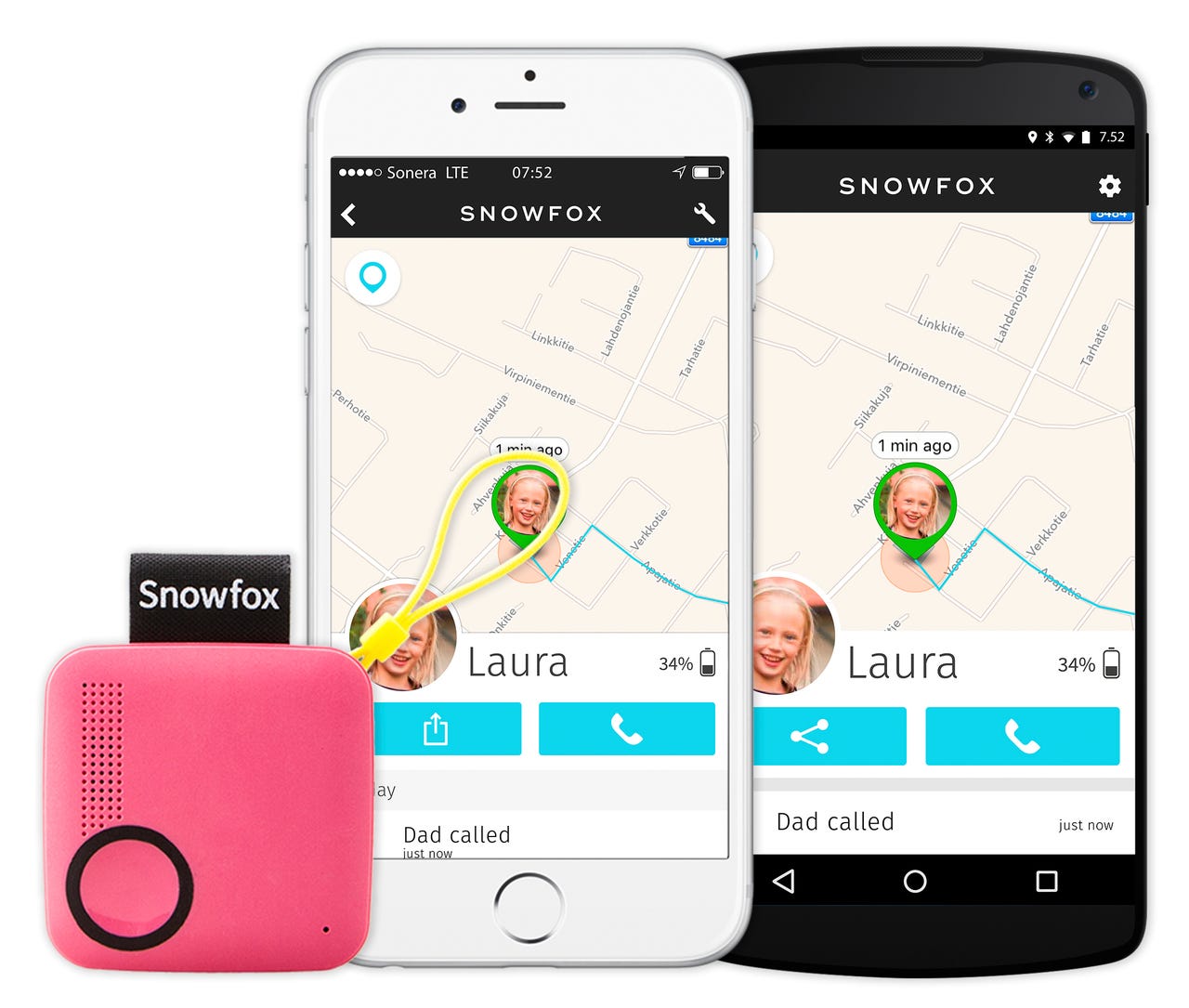Now parents can unleash ex-Nokians' Snowfox to track their kids' movements


With trackers of all kinds growing in popularity, the latest startup to tap into the trend is Finnish internet of things (IoT) developer Haltian.
The company has created Snowfox, a matchbox-sized, screenless trackerphone that helps parents keep tabs on their children's movements.
The square device is targeted at four- to eight-year-olds. Haltian believes children of that age do not yet need a fully-fledged smartphone, so Snowfox features a simple one-button interface combined with a GPS tracker and two-way audio call functionality.
While the bright exterior might appeal to children, Snowfox's features are designed for their parents' peace of mind.
"This is a growing market," Haltian CEO Pasi Leipälä says. "There have been many articles about [parents] not wanting to buy smartphones for young kids because the phones are so big, hard to carry around, and always having a large screen [with them that] takes too much of their attention."
That issue presumably won't apply to Snowfox, which weighs 36g and instead of a screen has a button on the side for receiving calls and asking for a callback.
When the button is pressed, the device sends a 'call me' notification to the wearer's parents or nominated contacts via an accompanying Android or iOS mobile app. Pressing the same button lets the child answer an incoming call.
Furthermore, Snowfox's GPS function allows parents to track the movements of their child. They can also set up safe areas and receive a notification when their child enters or leaves one of these 'geofenced' zones. Haltian says all data is encrypted and the waterproof device can only be turned off from the mobile app.
Leipälä says reliability is a major focus area for the company, which promises a week's worth of normal use out of the device's 820mAH battery, which translates to three to four hours of movement and 30 minutes of calls per day. Haltian says it is seeking to patent its algorithm for optimizing power consumption.
Using wearable tech to keep kids safe is not a new phenomenon. In the Nordics, Swedish company Tinitell is preparing to ship a Snowfox rival in watch form, but Haltian is confident there is room for new players.
Haltian believes Snowfox's real differentiator is its embedded multi-IMSI (international mobile subscriber identity) SIM card which works globally by connecting to major 2G and 3G networks in each country. The device, priced at £114, should work straight out of the box as long as the required monthly pay-as-you-go subscription of around $10 is paid.
"We can configure [the SIM] after production to match where the smartphone calls come from -- for instance, if it is an UK or Finnish number. This is a unique solution," Leipälä says.
Snowfox was soft launched in Finland in June and marketed internationally with an Indiegogo crowdfunding campaign. It has yet to reach its goal of $50,000, but the first devices will nevertheless be ready to ship in October.
Haltian was founded in 2012 by five former Nokia employees and today employs roughly 80 mostly ex-Nokia staff in Oulu, northern Finland.
Snowfox is built on Thingsee, Haltian's open-source IoT developer platform and Thingsee One, the company's first IoT hardware device for third parties. In fact, Leipälä says one of the aims for Snowfox is to demonstrate an end-to-end use case for its Thingsee environment.
While Haltian's main focus is on third-party device design and IoT service development, it is also planning a second trackerphone for the consumer market. Like Snowfox, it is built on the Thingsee platform, will target the elderly and could launch before the end of the year.
"That fuzzy IoT hype from two to four years ago is over. Now there are clear R&D projects and products on the market with services and solutions that use actual IoT structures. [The hype] is starting to become real," Leipälä says.